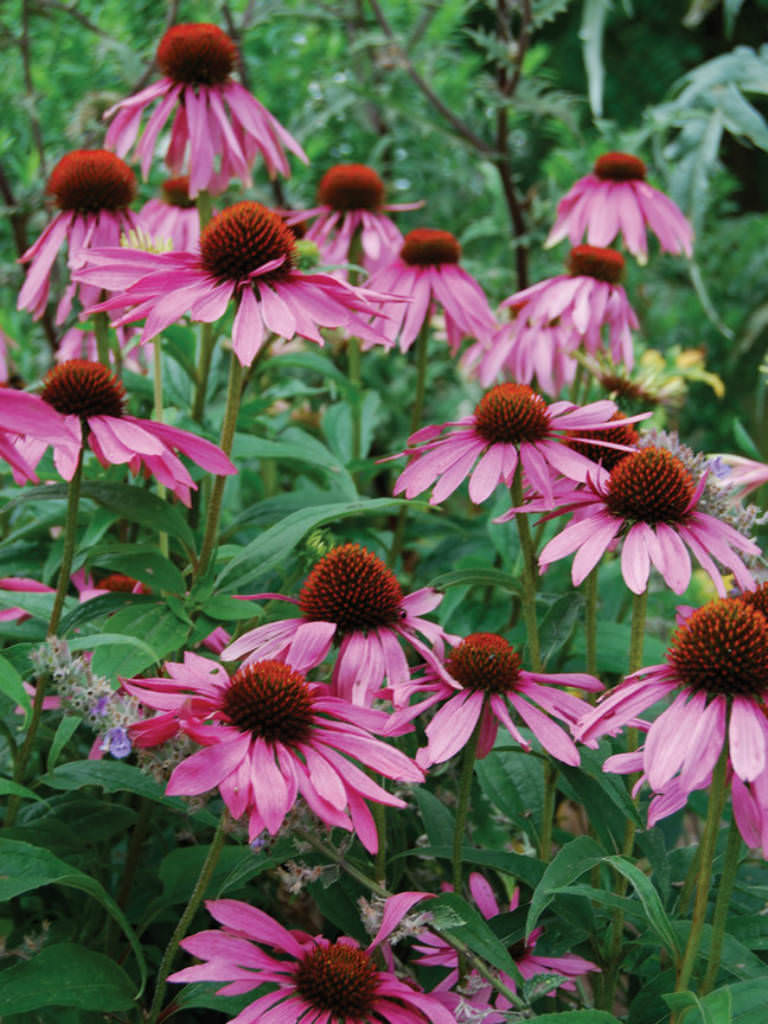


As a nectar source, Echinacea purpurea will attract butterflies.Wildlife benefits of Echinacea PurpureaĪs a native plant, Echinacea purpurea provides value to many forms of wildlife. At home in exposed flower beds, these plants will be able to withstand strong winds and look great all growing season. These stems will produce blooms that are long-lasting with vibrant shades of purple and pink.

Aesthetic benefits of Echinacea purpureaĮchinacea makes dark green, lush foliage at its base that will give way to long hairy stems. Echinacea purpurea with Rudbeckia planted as a companion Echinacea Purpurea Reference Table Scientific nameĮastern United States, USDA Zones 3-9 Įchinacea purpurea has many benefits from aesthetics, ecological, and health. Echinacea purpurea has high value to wildlife of all kinds. The native range is meadows, prairies, roadsides, and open woods. The foliage has a rough texture, and is browsed by rabbits and other herbivores. The long stems make this an excellent cut-flower. This large multi-stemmed perennial will bloom for months beginning in Summer, and extending to frost if deadheaded. Blooming from summer to fall, this showy flower attracts bees, butterflies and hummingbirds to your garden.
#PURPLE CONEFLOWER FULL#
Commonly known as Purple Coneflower, this species typically grows 3′ tall and prefers full sun with well-drained soil.
#PURPLE CONEFLOWER HOW TO#
How to Grow Echinacea Purpurea from seed.How to Grow and Care for Echinacea purpurea.What are the benefits of Echinacea purpurea.I’ve grown this flower for over 8 years and will share all that I’ve learned with you! The large pink-purple daisy like blooms are beautiful and attract lots of bees, butterflies, and birds. Warning: The flower has reported medical uses, but sometimes causes allergic reactions if ingested.With long lasting blooms that pop with color, it is no wonder that Echinacea is one of the most popular flowers in the United States and the world. Propagation from root cuttings is reliable if performed in the fall. Fertilize at planting time with a timed-released product. The plants require supplemental water once or twice per week after established. Place in fertile, well-drained soil enriched with organic matter. Fall is the best time to plant purple coneflower because they establish more easily in cooler weather. Prefers full sun, but tolerates light shade. May be started from seeds or transplanted from containers. Pests and Disease Problems: Rarely serious, though Japanese beetles sometimes eat both flowers and leaves Leaves: Oval green leaves with pointed tips, 3 inches long and 2 inches wide Works well cut flower arrangements.įlowers: 2 – 7 inches across, with coppery-orange centers and bristly cone These long-blooming perennials attract bees and butterflies and will flower all summer with little attention. The daisy-shaped flowers are individually arranged on sturdy, elongated stems with soft lavender or purple petals and a coned center. The purple coneflower is drought tolerant and native to the Midwest and southeastern United States. Logos and Public Communications Requirementsīotanical name: Echinacea purpurea (Asteraceae) Echinacea angustifoliaĮxcellent perennial flowering plant for Texas gardens.DCMGA Logo Clothing and Replacement Badges.


 0 kommentar(er)
0 kommentar(er)
